Haft Sin ceramics by Hozan Zangana echo the outlines of Persian calligraphy
Eindhoven designer Hozan Zangana has created a set of ceramics for the traditional Persian new year celebration based on the forms of the calligraphic Nastaliq script.
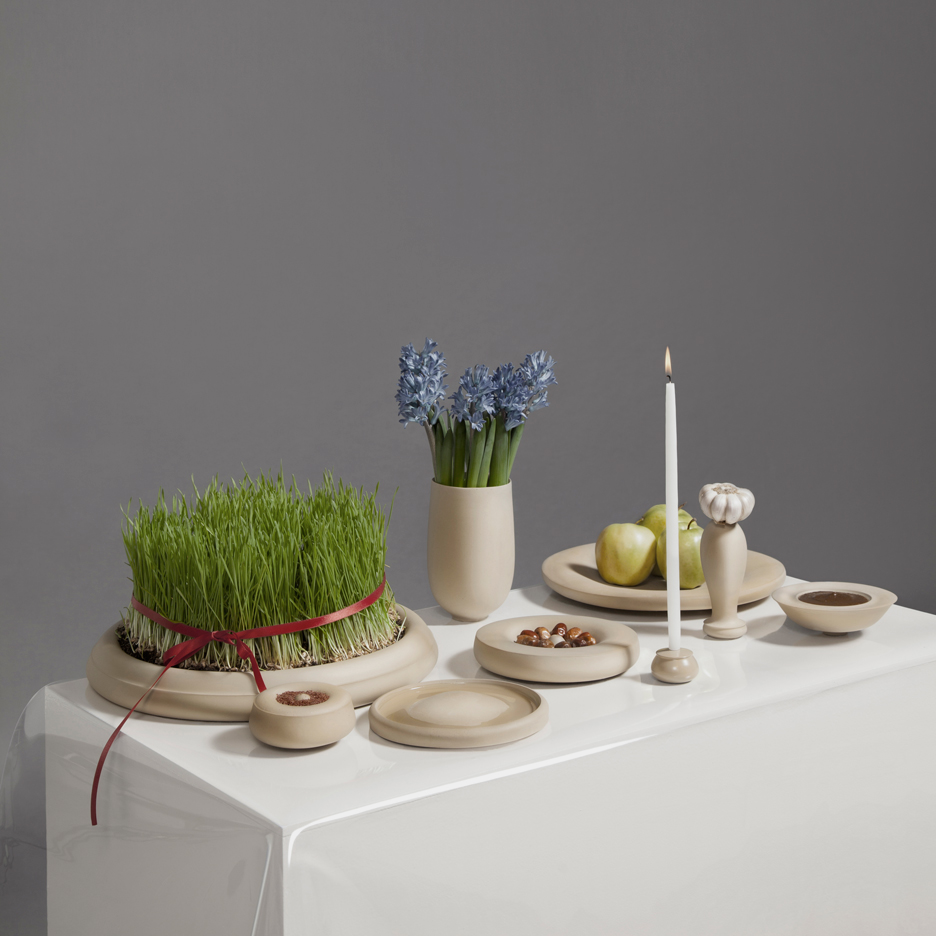
One of the rituals performed for Nowruz – literally translated as new year – is the setting of a Sofraye Haft Sin, which is a table or dining cloth laid with seven or more items starting with the letter S.
When his wife struggled to find a Haft Sin set in the Netherlands, Zangana decided to create his own updated version based on the forms of hand-drawn lettering used for Perso-Arabic writing.
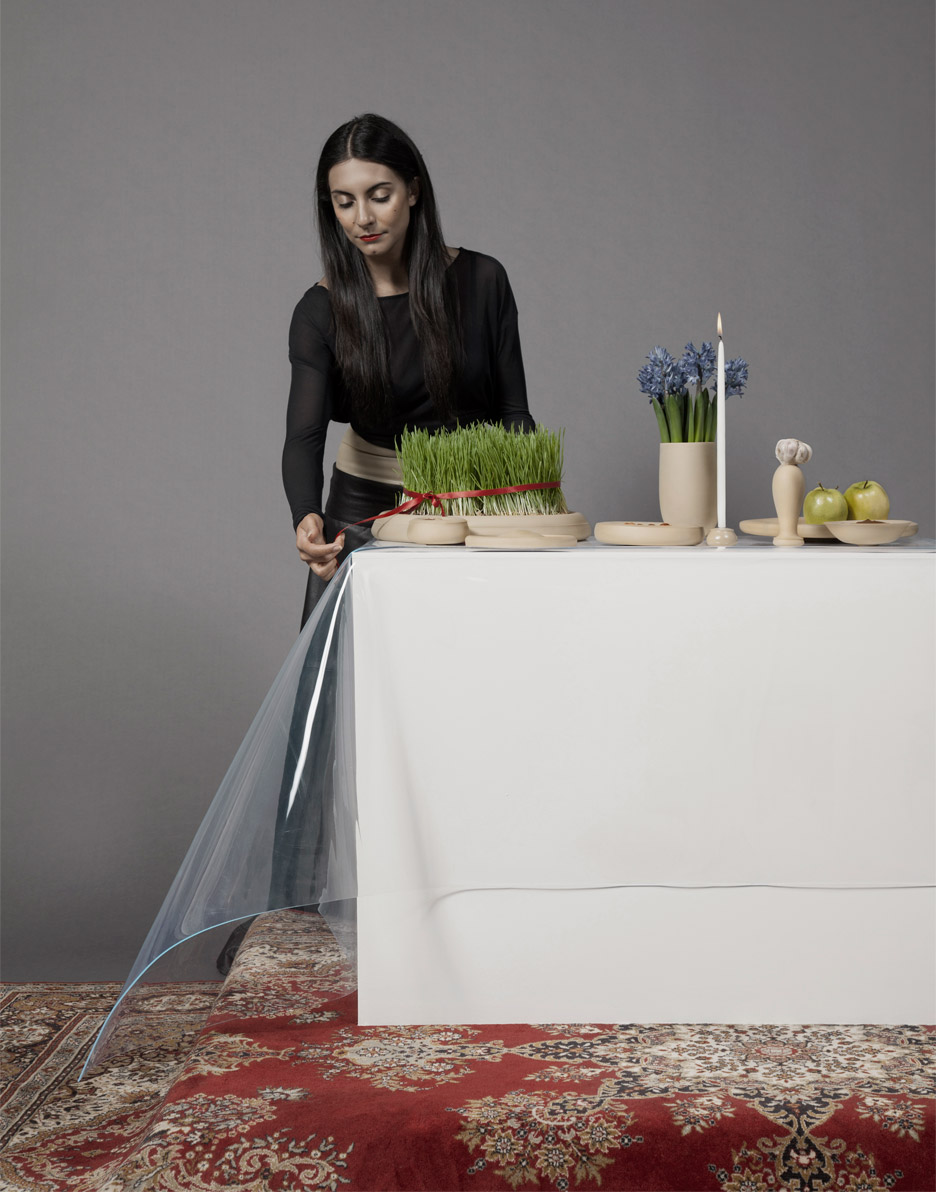
"As a designer I am always looking for elements that represent the blend between my history in Iraq and my life in the Netherlands," said Zangana.
"I come from a culture with a long history that is full of traditions and customs. Research has led me to go back in time, let's say six or seven thousand years ago."
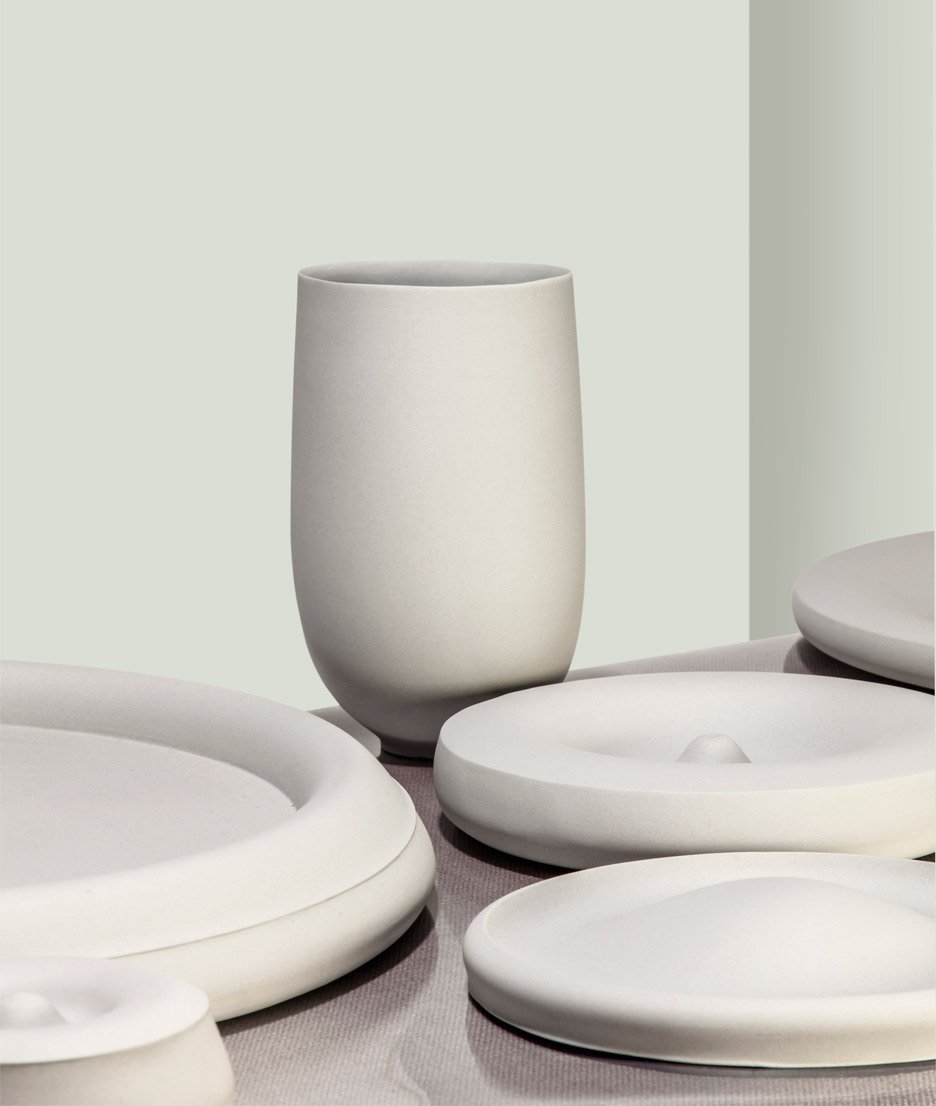
"But I have also looked at what we have today," he added. "What came out of the research was calligraphy and the nastaliq script, which I have used for the lines and shapes."
Zangana created his Haft Sin set of nine pieces in brown, dark grey and light grey versions. A short rounded candlestick holder echoes the curves of letters, while more shallow bowls can be used to hold fruit or other small pieces of food.
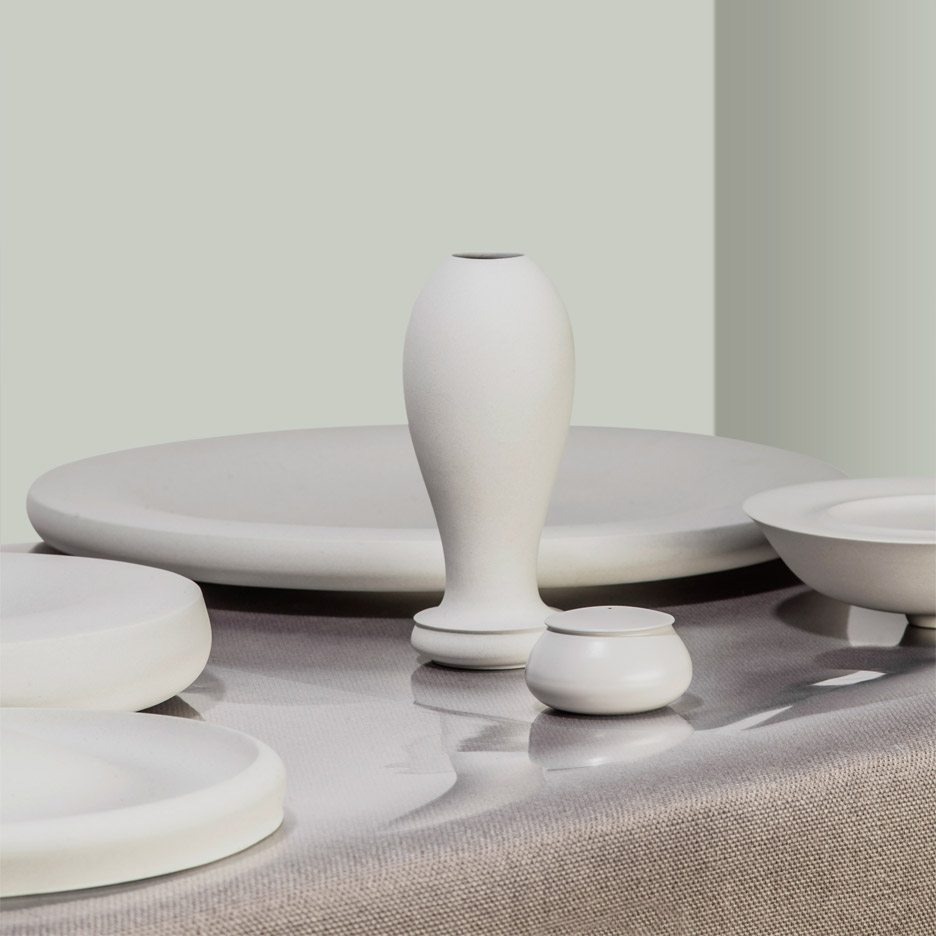
Wider flatter vessels serve as plates, and have lines incised around the rim – mimicking single pen strokes. One of the pieces features a distinctive raised section in the middle, while taller vessels can be used to hold flowers or plants.
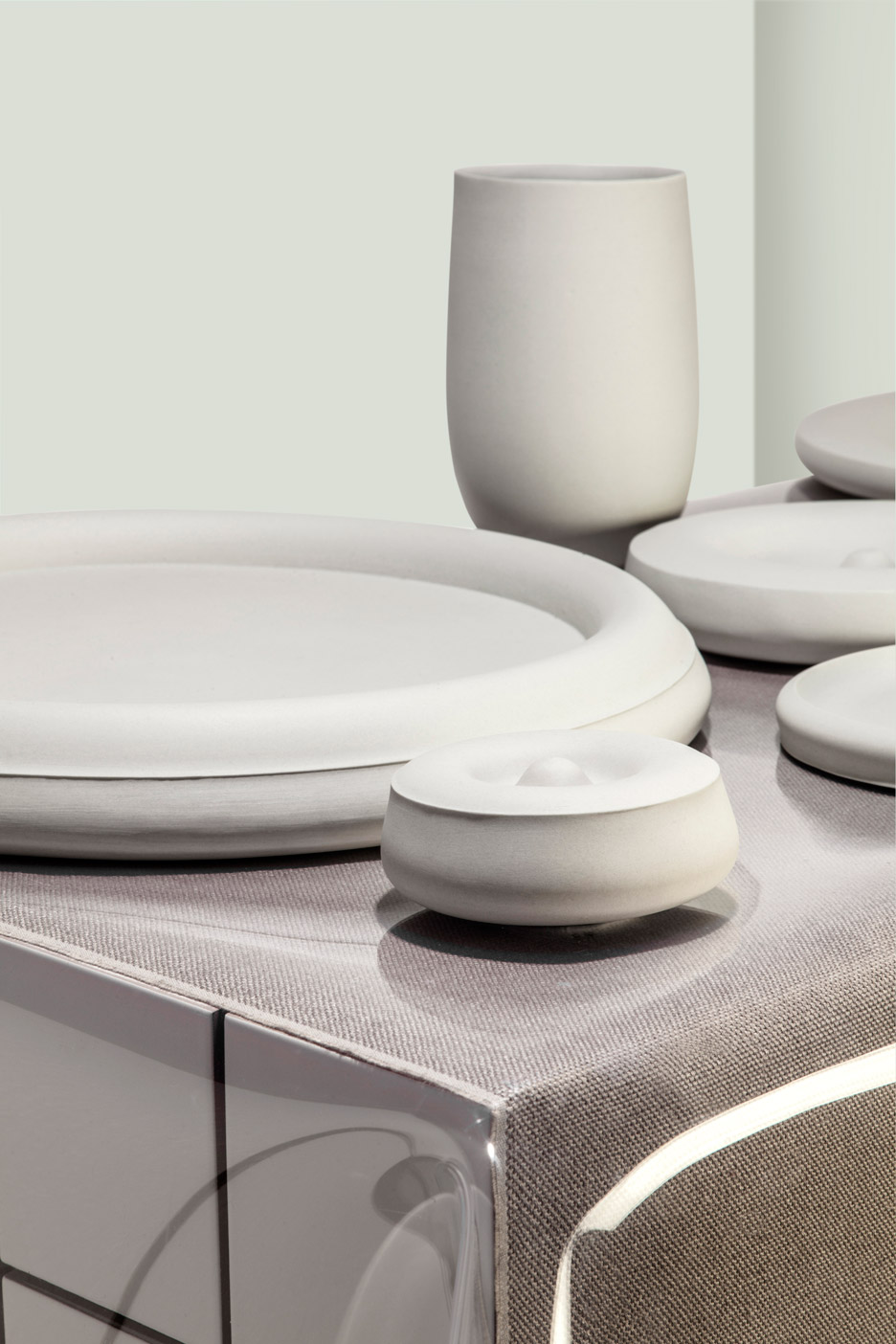
Other designers have used rituals as a starting point for work. Dana Douiev designed ceramic utensils for the preparation of traditional Ethiopian bread in a contemporary city kitchen, and Luca Nichetto and Lera Moiseeva created tableware that would encourage ritual sharing of food.
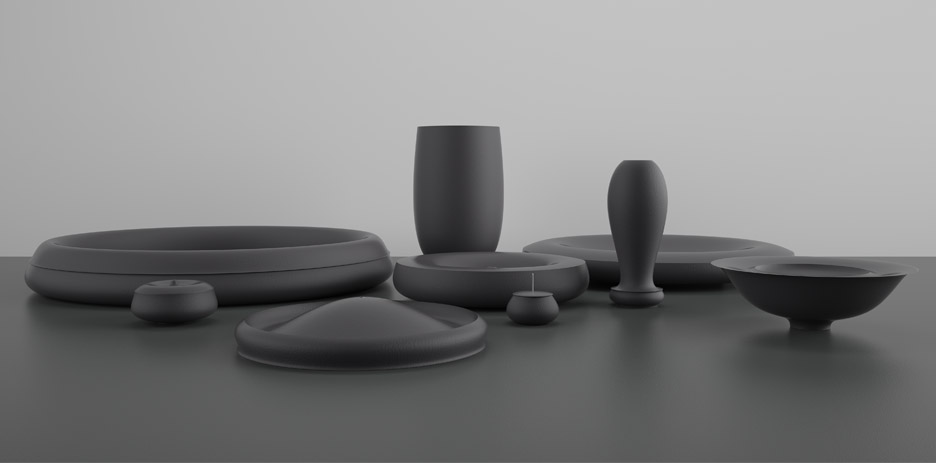
Make That studio similarly turned to tradition, when it designing a minimal version of an historic Sicilian jug.